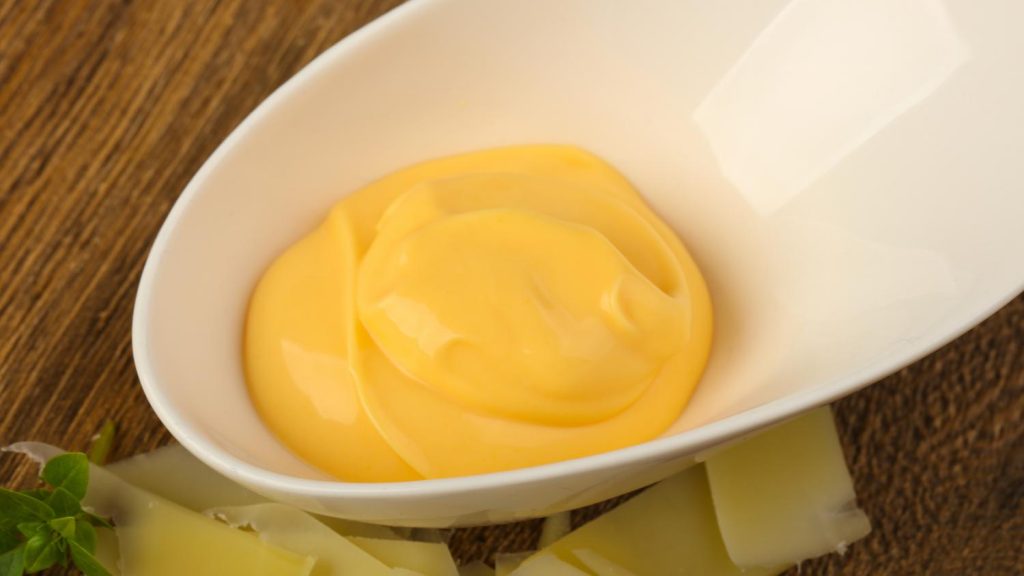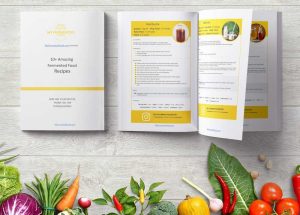
Imagine this: you’re in a rush, but so hungry and in need of a quick lunch. There’s a bag of broccoli and cauliflower in your freezer and some frozen meat. There’s not enough time for the latter and even though you’re not a fan, you choose to go with the veggies.
How to make them more delicious but really fast, you could be asking? Did you ever try veggies with some delicious homemade cheese sauce? No?
The homemade cheese sauce is the perfect addition to almost any dish and occasion: family movie nights, kids’ slumber parties and games nights, unexpected friends’ visits, quick afternoon snacks or a 4 am hunger alert (ok, the last thing is just me..).
A good and simple recipe for cheese sauce can be a real game-changer in the kitchen (for its excellent quality, and taste)!
You can put the delicious creamy cheese on nachos, broccoli, quiche, cauliflower, or mac and cheese.
You can get creative and use your cheese sauce for pastry or meat stuffing, but believe me, there will be a point in your life when you’ll just start pouring it on everything!
The homemade cheese sauce recipe provides you with a dip that is ten times better than those processed cheese dips you can purchase at the store and it’s very easy to prepare.
All you need is some simple dairy products, a stove, and a couple of minutes of your time. You also need electricity but thanks to Tesla you’re covered.
If you’d like to learn how to make cheese sauce at home, stick with me to the end of this article.
Now, here’s one of the simplest and tastiest cheese sauce recipes.
Table of Contents
What Type of Cheese Do I Need?
There are no special rules about the type of cheese you should use when making a cheese sauce: it all boils down to your taste. The only requirement is that it melts.
If you want to make the perfect food combination, try tasting different kinds of cheeses and see which one best goes with the dish you’re having.
For example, I prefer broccoli with freshly grated cheese (I am strange that way..).
However, if you’re not sure and just want to experiment with cheese sauces, I suggest Cheddar cheese, as there’s no way for the Cheddar cheese sauce to fail (except if you’re allergic to cheddar in which case stay away from it).
You can also combine grated Cheddar cheese with Blue cheese, Parmesan, or use different types of Cheddar cheese.
Print
Cheese Sauce Recipe
Description
Cheese sauce recipe with optional spices.
Ingredients
- Milk: 2 cups. Milk adds some sweet taste to the cheese sauce and helps the melting process.
- Purpose flour: 4 Tablespoons. The flour helps thicken the cheese sauce.
- Butter: 3 ½ Tablespoons. It gives the cheese sauce a rich flavor and annuls the taste of flour.
- Cheese: ½ cup (3,5 oz). If you want to achieve a stronger taste use freshly grated cheese, but if you prefer a mild taste, coated shredded cheese will do the trick.
- ¼ teaspoon onion powder (optional).
- A pinch of pepper (optional).
Equipment
- Large saucepan: 1 pc;
- Stirring spoon: 1pc;
- Serving dish: 1 large bowl or 6 small cups.
Instructions
Step 1: Prep
Take the large saucepan and pour 2 cups of milk inside. Add 4 tablespoons of purpose flour and 3 ½ tablespoons of butter.
If you decide to make some spicy cheese sauce, wait until the last step, when the cheese is semi-ready. In the meantime, you can shred the cheese into smaller pieces (optional).
Step 2: The Cooking
Here’s where it gets really good and your whole house starts smelling like cheese (my house smells like cheese all the time and I don’t even make cheese sauce).
First, turn on the stove to medium heat (don’t try to speed up the process by turning on the high heat, as you will burn the dairy products, I know you like shortcuts!) and start stirring or whisking the mixture.
Keep stirring while the butter melts and the mixture starts to boil.
Cooking the butter properly in this mixture is very important (it will help remove the taste of the flour). As you stir the mixture, the flour will slowly disappear and the sauce will become thicker.
Step 3: Adding the Cheese
As the mixture is becoming thicker, stir for another 2 or 3 minutes. Then, remove the saucepan from the heat to add the shredded cheese or cheese cube inside.
You probably won’t be needing a saucepan back on the stove, as the milk will still be hot enough to melt the cheese. It’s much better to wait a bit for the milk to melt it than for it to become grainy due to direct contact with the heat.
Just keep stirring until it reaches optimal thickness. If you want to spice it up, now is the right time to add pepper or onion powder. Don’t wait for the sauce to cool down, add them while you’re still stirring.
Step 4: Service While Hot and Enjoy
Cheese sauce tastes the best while it’s still hot so make sure you serve it quickly and eat with joy!
Notes
You don’t have to be Jamie Oliver to learn this recipe. Even if you’re not an experienced chef, you shouldn’t have any difficulties with this cheese sauce recipe.
FAQ
How to Serve Homemade Cheese Sauce?
As we mentioned already, homemade cheese sauce goes well with everything (don’t quote me on this, I like to exaggerate things). However, here are some of the most common recommendations:
- Pretzels bites;
- French fries topping;
- Baked potatoes topping;
- Cauliflower topping;
- Broccoli topping;
- Macaroni topping;
- Cheese nachos;
- Tortilla chips dip;
- Rice topping;
- Meat stuffing.
- Ice cream (what, no?)
I could go on and on with the list but I am paid by the hour so I really have to finish this article. What are your ideas? Do you plan on getting creative with your cheese sauce recipe?
Can I Reheat My Cheese Sauce?
Yes. Reheating the cheese sauce is not problematic at all. The fastest way is to put it in the microwave and stir it for a few seconds every minute or two.
You can also heat it on the mildly heated stove but you need to stir it constantly.
What if My Cheese Is Not Thick Enough?
Even if you added all the ingredients right, it can happen (but rarely) that the cheese doesn’t thicken enough. The best things to do when this happens are to:
- Add more cheese. This is of course the preferred method, as it will make the cheese sauce creamier and softer;
- Add some cornstarch slurry (equal amount of cornstarch and water). If you go with this less desirable option, don’t just pour the slurry into the mixture. Add little by little while stirring on mild heat.
How Do I Store My Cheese Sauce?
If you want to make a bigger batch of homemade cheese sauce or you’re somehow having leftovers, don’t worry: it’s very easy to store it and it’s safe to reuse it. All you need is a sealed container and a fridge.
Important: don’t keep it in the fridge longer than 3 days. When you want to reheat it, take only as much as you plan on eating. Don’t heat the whole thing just to cool it again (common sense, people).

Leave a Reply